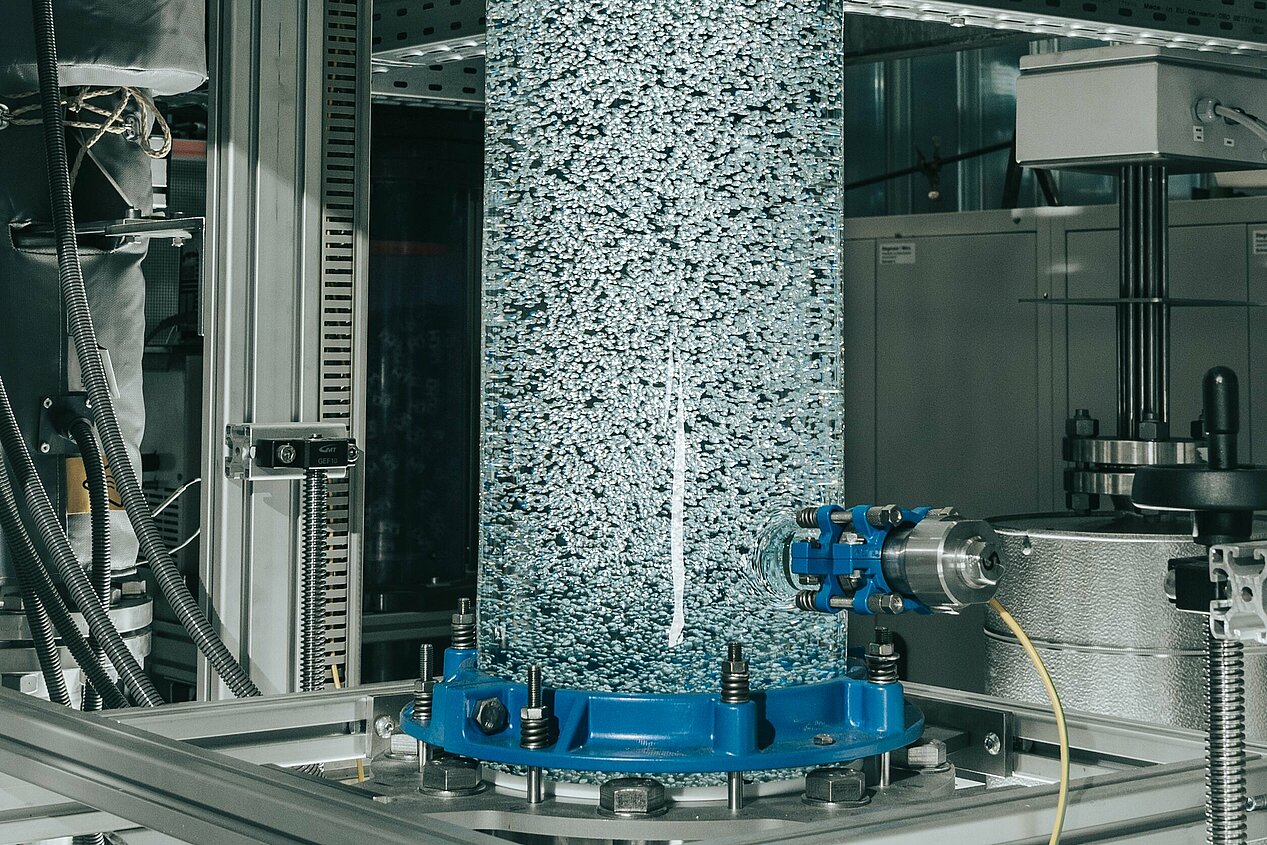

25. March 2021
The DVGW supports the gas and water industry in all technical and scientific areas. The main focus of the Association’s work is on safety and hygiene as well as environmental and consumer protection. The DVGW elaborates technical rules designed to promote the technical self-management of the German gas and water industry, thus ensuring the safe and secure supply of gas and water according to the highest international standards. The Association, which was founded in 1859, currently has approximately 14,000 members. The DVGW is free from economic and political influences.
www.dvgw.de/english-pages

25. March 2021
InnoSyn collaborative research project explores the reaction products of green hydrogen
The InnoSyn “Innovative synthesis processes for producing chemical energy carriers from green hydrogen in bubble column reactors with flexible loads” project was launched on 1 March. The project is coordinated by the DVGW Research Centre at the Engler-Bunte-Institut. Together with the Leibniz-Institut für Katalyse e. V., the Karlsruhe Institute of Technology and the Johannes Kepler University Linz (associated partners), this project will develop two innovative synthesis methods:
This method converts green hydrogen and carbon dioxide into climate-neutral chemical energy carriers as part of a PtX process chain. Gaseous as well as liquid end products are possible. These can be used for various applications as a substitute for petroleum-based hydrocarbons, especially in the mobility sector (e.g. LNG or FT diesel in heavy-goods transport, kerosene in air traffic) or in the chemicals industry. Suspension bubble column reactors will be used for both methods. These are perfectly suited for exothermal synthesis reactions as well as for the dynamic operating conditions with flexible loads as required for PtX processes.
At the DVGW Research Centre, the focus is on the fundamental investigation of the hydrodynamics in bubble flows. The aim is to increase the reliability of the fluid-dynamic design of a bubble column reactor. This requires the description of the local processes (e.g. bubble rising and interaction) and the interaction of the hydrodynamics and substance transport. To better understand the local processes in the bubble flow, in the InnoSyn project the DVGW Research Centre is using various measurement methods to investigate the hydrodynamics of bubble flows.